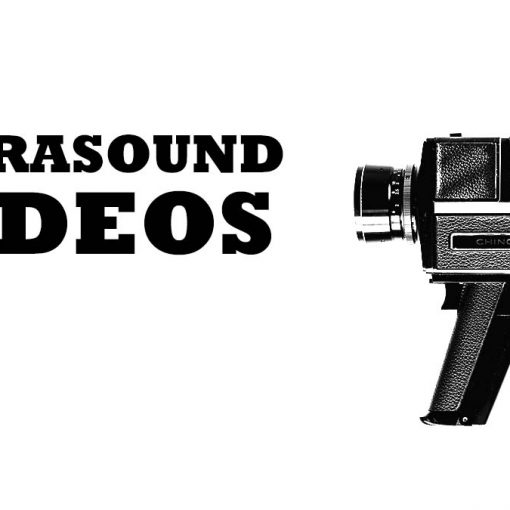Case
A 55 year old man was found unconscious in the bathroom by his family. After appropriate resuscitation and pre-oxygenation, you determine that there are no major predictors of difficulty, and so proceed with RSI. On 2 attempts at laryngoscopy, both direct and video, you cannot visualize the cords. The LMA won’t sit properly, and now his oxygen saturation is 70% despite your best attempt at bag valve mask ventilation…
My approach
In the can’t intubate, can’t oxygenate scenario, I recommend a surgical approach to cricothyroidotomy. In the NAP4 audit, 60% of needle cricothyroidotomy attempts failed. In contrast, 100% of surgical cricothyroidotomy attempts were successful. (Cook 2011; Nolan 2011) Although there are a few studies indicating that guidewire techniques are equally fast to surgical techniques, such studies are not consistent. More importantly, such studies can never reproduce the stress and adrenaline of real can’t intubate can’t oxygenate scenarios. I simply cannot imagine trying to thread a guidewire in that situation. Furthermore, there are numerous significant complications reported with jet ventilation through a catheter. (Duggan 2016) The Difficult Airway Society guidelines recommend surgical front of neck access over catheter based approaches. Specifically, they recommend the scalpel-bougie technique described below. (Pracy 2016; Frerk 2015)
Required equipment:
- Scalpel (a broad blade with the same width as the tracheal tube, such as a number 10 blade, is ideal)
- Bougie
- Endotracheal tube, cuffed, size 6.0mm (Frerk 2015)
Procedure
Announce to the room that you are in a can’t intubate can’t oxygenate scenario.
Throughout the procedure, a second provider should continue attempts at rescue oxygenation from above (BVM, LMA, or intubation).
Make sure you are wearing appropriate eye protection (and other PPE).
Position the patient with their head in full extension. (Frerk 2015)
Identify the cricothyroid membrane using “the laryngeal handshake” with your non-dominant hand. Stabilize the larynx between your thumb and third finger while palpating the cricothyroid membrane with your index finger. (Frerk 2015) I try to rest my wrist or forearm against the sternum for added stability.

If the membrane is easily palpated and the anatomy is clear, I perform the procedure as a single horizontal incision through both skin and membrane in a single stab. If there is significant adipose tissue, or the anatomy is otherwise unclear, I perform a large vertical incision through the skin first, palpate the membrane, and then perform the horizontal cut through the membrane.
After the horizontal cut through the membrane, extend the incision in the direction of the blade, then turn the scalpel 180 degrees (leaving the blade within the membrane) and extend the incision in the opposite direction. (Frerk 2015)
After the incision is made, I replace the scalpel with the index finger of my non-dominant hand and slide the bougie into the trachea over my finger. Another described approach is to insert the bougie with the scalpel still in the incision. Move the scalpel to the side of the larynx closest to you, and slide the bougie down the opposite side to the scalpel, perpendicular to the neck, into the trachea. (Frerk 2015)
Gently advance the bougie until hold up at about 10-15 cm.
Railroad a well lubricated 6.0 endotracheal tube over the bougie. Inflate the cuff.
Confirm endotracheal tube positioning with quantitative waveform capnography. (Frerk 2015)
Secure the tube.
Continue resuscitating the patient.

The rest of the airway series:
Part 2: Is this patient ready for intubation?
Part 4: Cricothyroidotomy
Notes
A special thanks to Dr. Laura Duggan (@drlauraduggan) and Dr. Casey Parker (@broomedocs ) for providing peer review for this post.

This is a great summary by Scott Clarke (@ScottCEdinburgh)

Other FOAMed Resources
AIME Bougie assisted Cricothyroidotomy
AIME Fireside Bougie Cricothyroidotomy: using a scalpel and/or your finger
Andy Neil’s Anatomy for emergency medicine: Cricothyroidotomy
EMCrit 47 Failure to Plan for Failure: A Discussion of Airway Disasters and the NAP4 Study
EMCrit 184 Needle Cric (again) and Transtracheal Jet Ventilation with Laura Duggan
Emergency Trauma Management podcast: Episode 12 Approach to the surgical airway and Episode 13 Approach to the surgical airway – Part 2
The Procedures Course Podcast: Surgical Airway
References
Cook TM, Woodall N, Harper J, Benger J, . Major complications of airway management in the UK: results of the Fourth National Audit Project of the Royal College of Anaesthetists and the Difficult Airway Society. Part 2: intensive care and emergency departments. British journal of anaesthesia. 106(5):632-42. 2011. PMID: 21447489 [free full text]
Duggan LV, Ballantyne Scott B, Law JA, Morris IR, Murphy MF, Griesdale DE. Transtracheal jet ventilation in the ‘can’t intubate can’t oxygenate’ emergency: a systematic review. British journal of anaesthesia. 117 Suppl 1:i28-i38. 2016. PMID: 27566790
Frerk C, Mitchell VS, McNarry AF. Difficult Airway Society 2015 guidelines for management of unanticipated difficult intubation in adults. British journal of anaesthesia. 2015; 115(6):827-48. PMID: 26556848 [free full text]
Nolan JP, Kelly FE. Airway challenges in critical care. Anaesthesia. 2011;66 Suppl 2:81-92. PMID: 22074082 [free full text]
Pracy JP, Brennan L, Cook TM. Surgical intervention during a Can’t intubate Can’t Oxygenate (CICO) Event: Emergency Front-of-neck Airway (FONA)? British journal of anaesthesia. 2016. PMID: 27646054
Morgenstern, J. Emergency Airway Management Part 4: Cricothyroidotomy (surgical front of neck access), First10EM, December 18, 2017. Available at:
https://doi.org/10.51684/FIRS.5204






2 thoughts on “Emergency Airway Management Part 4: Cricothyroidotomy (surgical front of neck access)”